Lewis
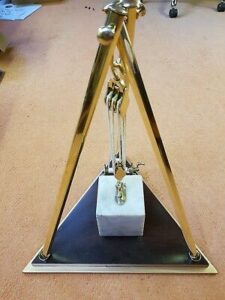
The lewis is a tool used in operative masonry to lift large stones into place. They are tripods that sit securely in place and support the freshly cut stone. Its historical use has been proven to exist as far back as the early Romans. It is still used today in many different professions including car mechanics to help lift heavy engines into and out of vehicles.
In speculative Freemasonry a Lewis is the son of a Freemason who is joining the fraternity. This analogy it is commonly used to show that the father raised the son into position to take his place as part of the structure of Freemasonry.
Ashlars

In Freemasonry the rough and perfect ashlars are common symbols. They represent the mason himself in two different forms. They are early versions of the before and after photos that are often used today to demonstrate the visible changes that have occurred.
In operative masonry, the rough ashlar is an unrefined basic cube of stone, that has just been broken free from the quarry.
In speculative Freemasonry this represents the candidate or uninitiated man who is being brought into the brotherhood. The basic shape is visible, but there are lots of rough edges and imperfections visible. The Entered Apprentice, or first degree Mason, is taught to cut these symbolic stones through the initial lessons they learn.
By thoughtful and deliberate use of the gavel and the other working tools, the rough and superfluous parts of stone are being chipped off. And after much work by expert craftsmen, this rough ashlar becomes a perfect one.
This perfect ashlar, also called a dressed stone, is then fit to be placed into the final structure or building that it was hewn for.
In speculative Freemasonry the perfect ashlar symbolizes the final goal that each Master Mason hopes to attain one day. Through dedication of their life to the principals and tenants of Freemasonry, and continuous education in the philosophy and ideals he hopes to get ever closer to that perfect balance of virtues.
The remaining chips and flakes of stone that were broken off the initial rough ashlar are the life experiences that remind us of the long and oftentimes arduous journey we took to improve ourselves and become better men.
Cardinal Virtues
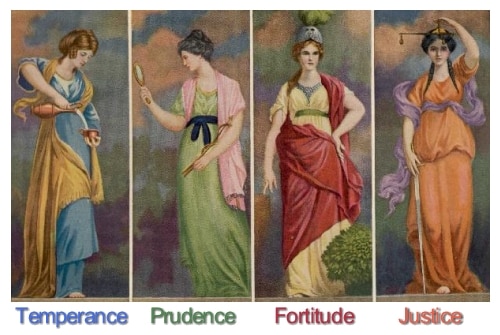
The Four Cardinal Virtues – Temperance, Prudence, Fortitude and Justice feature prominently in the Entered Apprentice degree. They are considered to be essential as the foundation for any good mason.
Temperance:
For Masons, Temperance is that due restraint upon our affections and passions which renders the body tame and governable, and frees the mind from the allurements of vice. When practiced and perfected, a Mason is able to abstain from actions that may impair his faculties and perceptions. By this self-restraint, he shall not materially err.
Prudence:
Prudence enables us to regulate our lives and actions agreeably to the dictates of reason. Simply, it is the practice of good judgment, common sense, and the wisdom we acquire in our journey through life. Prudence is among the most exalted objects that demand every Mason’s special attention, for it is the rule which governs all other virtues.
Fortitude:
Fortitude is that noble and steady purpose of the mind, or courage in the face of pain or adversity. It is how we build our character, improve our moral fiber, and strengthen our minds to manage the challenges of life. In the absence of this virtue, no person can perform his duty, either to God, his neighbor, or himself, in an acceptable manner.
Justice:
Justice is that standard or boundary of right which enables us to render to every man his just due without distinction. Justice must always dictate fairness, honesty, morality, and neutrality in the treatment of all of mankind, more especially a Brother Mason. The exercise of this virtue incites us to act toward others in a manner that we wish they would act toward us.
More Info:
https://www.hillsborough25.org/masonic_noble_virtues.html
Masonic Hoaxes
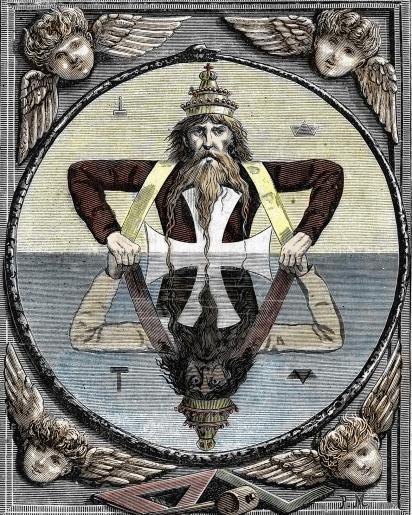
“There are Masonic conspiracy theories dealing with every aspect of society. The majority of these theories are based on one or more of the following assumptions:
- That Freemasonry is its own religion, requires belief in a unique Masonic god, and that belief in this Masonic god is contrary to the teachings of various mainstream religions (although usually noted in terms of being specifically contrary to Christian belief)
- That the 33rd degree of the Scottish Rite is more than an honorary degree, coupled with the belief that most Freemasons are unaware of hidden or secretive ruling bodies within their organization that govern them, conduct occult ritual, or control various positions of governmental power
- That there is a centralized worldwide body that controls all Masonic Grand Lodges, and thus, all of Freemasonry worldwide acts in a unified manner.”
All of these ideas are completely baseless, false, and without any reliable evidence.
Just because someone has a slickly produced youtube channel or website does not mean that the ideas they propose are true.
More Info:
https://en.wikipedia.org/wiki/Masonic_conspiracy_theories
The Grotto
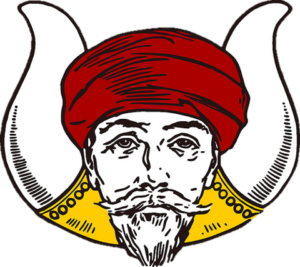
The Grotto is an appendant body of regular Freemasonry. Its full name is “Mystic Order of Veiled Prophets of the Enchanted Realm” or MOVPER for short. The members wear black fezzes with red tassels, and the local groups are organized into “grottos”. To become eligible to join one has to be a Master Mason in good standing (dues paying) in a local lodge. It is a social organization that encourages Master Masons to enjoy fellowship, brotherhood and engage in charity.
The Grotto was formed in 1890 and is still very much focused on friendly fellowship and charity. It offers a Persian themed atmosphere, degrees and titles. It is often compared to the Shrine. But while the Shrine required its members to be either 32 degree Scottish Rite or Knight Templar York Rite members (this was only changed in the year 2000), the Grotto was open to all Master Masons.
In 1917 the “Mysterious Order Witches of Salem” was formed as the female auxiliary body of the Grotto. To join, one must be the wife, widow, or female relative of a member of a Veiled Prophet.
More Info:
https://scgrotto.org
Catechism

What does this strange word mean and why do you do it?
A catechism is a series of fixed questions, and answers, used for instruction. In Masonry we use it to teach new members about the ideals and philosophy that Freemasonry is based upon.
It is a dialog between two fictional Masonic brothers who have never met before. The one is trying to verify that the other is a legit member of the fraternity by asking open ended questions that the other must correctly answer. It is in old English and the language itself can be very confusing to new members. The questions can be as simplistic as “what color is the sky”, with a simple one word answer: “blue”. Or it can be as basic as: “what happened?”, followed by an entire paragraph of answer.
The catechism is broken down into three distinct sections. The first section recaps what happened to the candidate in the actual degree. The second is an in-depth explanation of the reasons behind these actions. The final section is a more general explanation of freemasonry itself.
New members learn this catechism through the help of more senior ones. This is also an opportunity to get to know the other members of the fraternity and become personally engaged. Freemasonry is a lifelong brotherhood, some might call it a way of life. The catechism is the first opportunity for many new members to truly meet their new brethren, and learn about their personal lives and what makes them “tick”.
It is also an opportunity to learn what the words of this archaic language mean. The students are encouraged to ask any questions that they might have, and explore the answers with the guidance and feedback from the more experienced, senior members of the lodge. After all, there is no one spokesman of Freemasonry whose word is the only answer. Each member is encouraged to find their own truth, even if that truth changes and grows as more knowledge is gained over time.
Different lodges have different traditions. In some Grand Lodges it is legal and encouraged for the candidate to use a “cipher” book, or even plainly spelled out text. While in others, such as the Grand Lodge of Texas, it is only possible to do the catechism work from “mouth to ear”. This means that the brothers need to speak and repeat the questions and answers. Nothing can be written down. Finally, some lodges ask the questions and the student has to state only the answers. While in other lodges, such as Austin Lodge No. 12, it is the tradition for the student to state both questions AND answers, thereby examining himself.
Once the student has learned the catechism to a degree that he and his mentor are comfortable with, he will have to repeat it in open lodge, in a called meeting, in front of his brothers. If they agree that he has recited it to a satisfactory level, then the student will be called proficient. Once a mason passes the proficiency examination, then he is eligible to take the next degree.
More Info:
http://www.thelaudablepursuit.com/articles/2016/4/21/making-the-most-of-the-masonic-catechism
So Mote it Be
“So mote it be” is a ritual phrase used by the Freemasons, in Rosicrucianism, and more recently by Neopagans. Some of the younger Masons have started to abbreviate it to “SMIB”.
The word “mote” is an archaic Old-English verb and can be translated as “may”. Therefore, “so mote it be” means “so may it be”. The direct translation of the word “Amen” is “so be it”.
This phrase appears first in the Halliwell or Regius Manuscript, the earliest known document relating to a society of Masons in England, dating from the first half of the 15th century. “Amen! amen! so mot hyt be! Say we so all per charyté”.
Freemasons end their prayers the same way they did in 1390. The next time that you are in Lodge and say, “So mote it be”, you are reminded that you are continuing a 600 year-old Masonic tradition.
More Info:
https://scottishrite.org/scottish-rite-myths-and-facts/qa-so-mote-it-be/
https://en.wikipedia.org/wiki/So_mote_it_be
Why No Women
The question of why women are not allowed to join regular Masonic Lodges as full members often comes up when a married candidate considers putting in his petition. This is a very important question that unfortunately does not have a simple answer.
First of all, Freemasonry is a Fraternity. It is a brotherhood. This by definition means: men. If it was an organization exclusively for women, then it would be called a sorority.
The simple answer is that it is based on the Landmarks of Freemasonry. These are the foundational principles that all lodges must agree to in order to be considered regular and accepted by all other lodges. Besides a belief in a supreme being, is the idea that a Mason must be a man, freeborn, and of lawful age. This is based on historical and cultural beliefs that the man was the head of the household and responsible for his family. Women in Medieval and Renaissance Europe were legally assumed to be subject to their fathers, then to their husbands after marriage.
Even though it might be considered outdated by some, one must consider that organized, speculative Freemasonry is over 300 years old. The lodges follow the traditions and structures that were set into place back then and have only modified themselves in ways that are consistent with the ideas and landmarks of Freemasonry itself. After all, one of the landmarks states that there shall not be any inventions in Freemasonry. If one wanted to change such a foundational requirement and still be considered regular and accepted, then all other Grand Lodges throughout the world would have to pass a similar law.
Freemasonry is an organization that members can join of their own free will, by applying to it voluntarily. It allows members to be in an environment that is supportive and open-minded. There are few spaces in modern life that men are allowed to show vulnerability, masonry is one of them.
Finally, family and family values are an important part of a Freemason’s life. Freemasonry can provide men and their families with a fun and active social life with like-minded people from all walks of life. Freemasons are very appreciative of the support our partners and families give us as it is vital to our development as Freemasons.
More Info:
https://themasonslady.com/
Esoteric vs Occult Knowledge
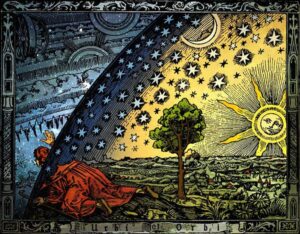
Esoteric knowledge is intended for a small group of people, based on specialized interest or knowledge. It is confidential or private. This could include such benign info as RBI stats in baseball, or how best to replace a leaking faucet. However, most people use it to refer to what is commonly known as “Western Esotericism”. This school of thought groups a wide range of loosely related ideas and movements. They often include Judeo-Christian religion and Enlightenment rationalism. Examples include Gnosticism, Hermeticism, Kabbalah, or Neo-Platonism.
Occult knowledge is hidden or concealed. It is usually seen as magical, mystical or supernatural beliefs that are outside of religion and science. Occultism is often used to categorize such esoteric traditions as Spiritualism, Theosophy, Anthroposophy, Wicca, Voodoo, or “Golden Dawn”.
Would something as common as the Christian sacrament of eucharist (Holy Communion) be considered occult or esoteric? It would depend whether or not the participant believes that the ceremony would symbolically or physically turn the wine into blood and the bread into human flesh. If it is symbolic then the eucharist would be esoteric, but if it would be physical, then it would be occult.
More Info:
https://en.wikipedia.org/wiki/Western_esotericism
https://en.wikipedia.org/wiki/Occult
Masons at the Alamo
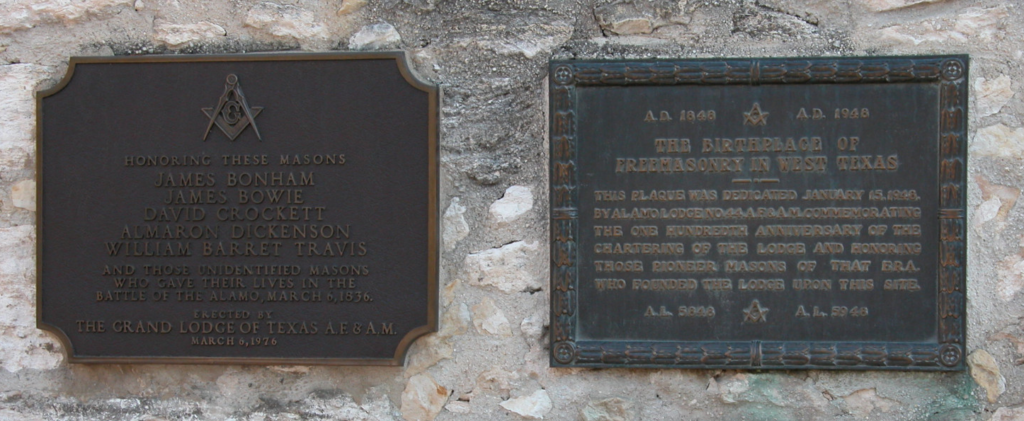
The Battle of the Alamo (February 23 – March 6, 1836) was a pivotal event in the Texas Revolution. Following a 13-day siege, Mexican troops under President General Antonio López de Santa Anna reclaimed the Alamo Mission near San Antonio de Béxar (modern-day San Antonio, Texas, United States), killing most of the Texians and Tejanos inside. Santa Anna’s cruelty during the battle inspired many Texians and Tejanos to join the Texian Army.
The Mexican Army under General Antonio Lopez de Santa Anna had crossed the Rio Grande and attacked and defeated the small garrison at the Alamo in San Antonio de Bexar.
Among the nearly 200 defenders who died at the Alamo were Freemasons James Bonham, James Bowie, David Crockett, Almaron Dickenson, and Col. William Barrett Travis.
Buoyed by a desire for revenge, the Texians defeated the Mexican Army at the Battle of San Jacinto, on April 21, 1836, ending the rebellion. Both the General, and first president of the Republic of Texas, Sam Houston and the Mexican General Santa Anna were known Freemasons.
More Info:
https://dallasfreemasonry.org/about-freemasonry/texas-freemason-history
https://en.wikipedia.org/wiki/Battle_of_the_Alamo